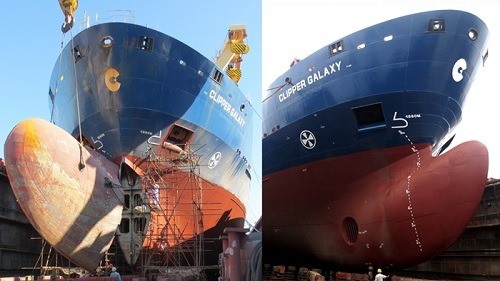What are Margin Plates in Ships?
We are all familiar with the concept of double-bottom construction in ships. Double bottom constructions offer enhanced structural safety against bottom damage and, at the same time, are used for storage of fuel oil, ballast water, freshwater, and other consumables. For most cargo vessels these days, like tankers and bulk carriers, double-bottom construction is mandated as per regulations.
As per these regulations, only cargo vessels with a tonnage of less than 500 can have simple single-hull construction today. Large cargo ships, especially oil tankers, must have a full double-hull construction. Besides the bottom region, the side region should also have double-layer protection with an inner side shell plating inside the outer one.

In the simplest form of double-bottom construction, there is an upper plate at a certain height above the bottom shell, and this is supported by internal transverse members known as floors.
These floors can be of various types. The upper plate is known as the inner bottom plating. Furthermore, the inner bottom shell plating is further stiffened using longitudinal stiffeners with scantlings per classification guidelines. The height at which the inner bottom is constructed is also per guidelines and rules based on the vessel type, size, design, and so on.
The thickness of the inner bottom plating is as per guidelines. However, usually, it is lesser than the outer hull shell platings for apparent reasons. Still, it is kept significantly high enough, as the inner bottom not only contributes to the global load longitudinal strength of the vessel but also withstands loads from above like cargo loads, tank loads, machinery loads, etc., along with internal pressure loads when the inner bottom space is used for ballast, fresh water, fuel storage, and so on.

From a construction point of view, the inner bottom is composed of connected plates welded longitudinally, that is, two consecutive plates being attached side by side. So, the margin plate is the plate, or rather plates (considering both port and starboard sides) at the side extremities of the inner bottom, that is, the point where the inner bottom plating meets the side shell of the vessel or the inner side shell plate.
Apparently, these plates of the inner bottom have no special significance. Still, they are essential members in forming the proper frame or transverse connectivity in joining the inner bottom with the side shell members, often at the turn of the bilge.
Thus, they not only withstand loads oncoming to the inner bottom shell component but also acts as a load path connector member contributing to load transfer from the bottom region to deep, transverse frames and vice-versa.

Moreover, they are also crucial in terms of structural continuity at the point of connection of the side inner shell and the inner bottom component.
As margin plates are in the extreme side ends of the inner bottom, they are also known as the outboard strakes of the inner bottom plating. We can infer that they absorb more netloads, including concentrated bending stresses, than the rest of the inner bottom plate members.
For all practical purposes, the scantlings of the margin plate are kept no different than the rest of the inner bottom shell plates.
The configuration and fitting of this margin plate vary. They may be simply like just another flat plate of the inner bottom or the tank top, or they may be sloped downwards to meet the outer shell plating.
In the latter case, the upper edge or end is often flanged to meet the inner bottom/ tank top plating and the lower end is attached to the outer shell by angle bar connections or suitable bracketing.
In double hull construction, they are either sloped up and welded to the inner side shell or are flat but connected to the inner side shell by a bracket.
You might also like to read-
- What is Angle Of Loll in Ships?
- What Is A Ship Trim?
- Understanding Frames in Ships
- Some Important Ship Construction Terms
- What are Draft Lines Of Vessels?
Do you have info to share with us ? Suggest a correction

About Author
Subhodeep is a Naval Architecture and Ocean Engineering graduate. Interested in the intricacies of marine structures and goal-based design aspects, he is dedicated to sharing and propagation of common technical knowledge within this sector, which, at this very moment, requires a turnabout to flourish back to its old glory.
Latest Naval Arch Articles You Would Like:
Subscribe To Our Newsletters
By subscribing, you agree to our Privacy Policy and may receive occasional deal communications; you can unsubscribe anytime.















